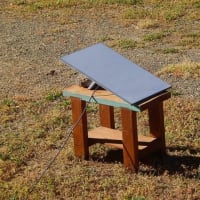彼の技法は激しく感性に訴え、画家が絵を描く物理的素料の中、顔料自体の中に、その一貫性とその巧みな扱いの中に、喜びを表していました。 そこには広範囲に多様な表面がありました、最大の豊かさを加えた重圧な色彩の移行から、デリケートな透き通った光沢への移行まで。
彼の筆使い、その極端に繊細な書法は、それ自体が(表現方法としての)言葉でした。
平たんとか、単調とか、そのような物はありませんでした;背景は、充分に中心的要素としても調整されています、色調も感触も全体を通して変化が加えられ;人物の中と同じ様に壁の中にも多くのドラマが描かれていました。 絵全体が、生き生きとしています。 ここには深い感性に満ちた活力の産物、豊かに物理的な芸術がありました

"Nude", 1929. Oil on Canvas. (30 x 40 inches) Hirshhorn Museum and Sculpture Garden.
Smithsonian Institution. Gift of Jose H. Hirshhorn, 1972
His handling showed the intense sensuous pleasure which the artist took in
the physical material of painting - in the pigment itself, its consistency, and the
manipulation of it. There was a wide variety of surface, from passages of heavy
pigment put on with the greatest richness, to other passages of delicate trans-
parent glazes. His brushwork, with its extremely sensitive calligraphy, was a
language in itself. There was no such thing as flat or dull area; the backgrounds
were modulated as fully as the central elements, as varied throughout in color
and texture; there was as much drama in a wall as in a figure. The whole picture
was alive. Here was a richly physical art, product of a deep sensuous vitality.

"Portrait of Kuniyoshi", 1941. Vintage gelatin silver photograph.
Courtesy of Jan Kesner Gallery, Los Angeles.
彼の筆使い、その極端に繊細な書法は、それ自体が(表現方法としての)言葉でした。
平たんとか、単調とか、そのような物はありませんでした;背景は、充分に中心的要素としても調整されています、色調も感触も全体を通して変化が加えられ;人物の中と同じ様に壁の中にも多くのドラマが描かれていました。 絵全体が、生き生きとしています。 ここには深い感性に満ちた活力の産物、豊かに物理的な芸術がありました

"Nude", 1929. Oil on Canvas. (30 x 40 inches) Hirshhorn Museum and Sculpture Garden.
Smithsonian Institution. Gift of Jose H. Hirshhorn, 1972
His handling showed the intense sensuous pleasure which the artist took in
the physical material of painting - in the pigment itself, its consistency, and the
manipulation of it. There was a wide variety of surface, from passages of heavy
pigment put on with the greatest richness, to other passages of delicate trans-
parent glazes. His brushwork, with its extremely sensitive calligraphy, was a
language in itself. There was no such thing as flat or dull area; the backgrounds
were modulated as fully as the central elements, as varied throughout in color
and texture; there was as much drama in a wall as in a figure. The whole picture
was alive. Here was a richly physical art, product of a deep sensuous vitality.

"Portrait of Kuniyoshi", 1941. Vintage gelatin silver photograph.
Courtesy of Jan Kesner Gallery, Los Angeles.



























